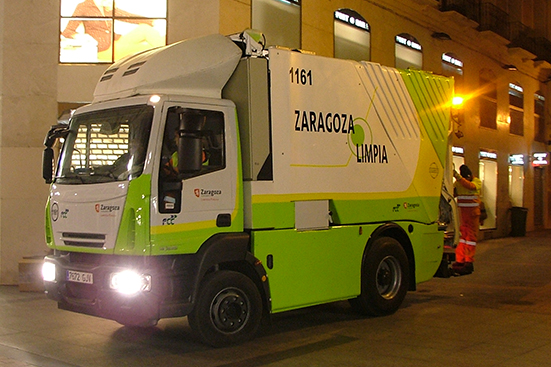

Urban hybrid-electric vehicles for waste collection with ultra-capacitor system
Study, analysis and development of new technologies in hybrid electric motorization for the urban solid waste collection truck
Work plan and methodology
Schedule of project’s activities >
The project schedule is as follows:

The project started in January 2014 and it has an expected duration of two years, ending in December 2015. It is divided into two milestones and a series of activities, which are described below:
MILESTONE 1 (01/01/2014 - 31/21/2014) >
In the first milestone of the project a preliminary phase is carried out, in which the specifications that the new vehicle should include are defined and the work plan and an implementation phase of prototype are stablished as well.
1. Definition of technical specifications
In the first stage, a state of the art analysis is performed. The starting point are the results of the project already completed by FCC: the hybrid electric vehicle with "plug in" batteries.
It is about investigating cases of successful implementation of this technology in other types of vehicles, the factors to consider, what the main risks are and so on. In addition, the starting point of the project is established.
From the results obtained, the parameters to be achieved in the new vehicle are defined:
• Capacity
• Routes
• Types of waste to be collected
• Energy demand
• Greenhouse gases reduction persecuted
Once these values are stablished, the amendments to be made to the chassis of vehicles, new designs, new components required and so on should be decided.
As a result of this milestone, FCC staff works on obtaining a document containing the technical requirements that the units should include such as mechanical requirements, dimensional requirements, energy requirements, functional requirements, electrical requirements, safety requirements, etc., developing the content of this document to the draft level. This document constitutes the state of the art of the technology in these vehicles, and this document will be a start point from competitors companies in the future.
2. Development and adaptation of the body to the new chassis
In this step is carried out the removal of the body of the FCC property vehicle on which the prototype will be built.
Once removed, the chassis must be adapted to the dimensions and requirements that involve its further transformation to an electric chassis, and implementing the necessary changes to the chassis.
In parallel to these activities, the works of adaptation and mechanical, hydraulic and electrical modification on the side loading body begin.
At this stage begins the development of the ultracapacitors system and advanced studies on energy demand that the new vehicle must possess are carried out, defining the energy parameters.
The FCC project team work on all tasks, being responsible for the definition of parameters and system design for the ultracapacitors system, the reengineering of the chassis and the design and implementation of the new system of control.
3. Development of the prototype
At this stage the complete transformation of the chassis takes place being implemented the electric-hybrid technology with ultracapacitors on the side load vehicle.
At this stage the technology development will take place as well as the implementation of an electronic control system which SIEMENS has developed specifically for this project.
The full implementation of electric-hybrid system in both prototypes marks the end of the first milestone.
As a continuation of the previous phase, in parallel, the work of adaptation and mechanical, hydraulic and electrical modification of the side loading body must finish.
MILESTONE 2 (01/01/2015 - 31/12/2015) >
4. Functional Testing
In this step is performed the bodywork of the side loading body already adapted with the chassis, and then the first function prototypes test that consist essentially of a starting up test, making the necessary changes on the design.
The term bodywork should be understood as that all mechanical and electrical connections required between the chassis and body so that both parts work as one only equipment.
The successful integration of new control software will be checked by performing real test of implementation and changes will be carried out on the drawings and designs if necessary.
5. Validation of the prototype
Once the operation of the prototype is checked, the compliance with the objectives initially set in terms of the values of the following must be verified
• Energy savings
• Load transported
• Reduction in emissions achieved
During these tests redesigns and engineering work will be necessary for the achievement of the initially established objectives.
A comprehensive safety test in terms of insulation and electromagnetic compatibility which confirm the studies collected in the project should be included.
6. Field Tests
Field test are carried out on the transformed unit consisting in testing the prototype under the same operating conditions that real ones.
Modifications and redesigns will be necessary to achieve optimal operating conditions. During this stage, modifications will be made on drawings and designs, as well as reengineering and component changes during performance tests directly on the street.

© FCC Servicios Ciudadanos 2015 • Todos los derechos reservados • Prohibida la reproducción total o parcial en cualquier medio excepto con autorización expresa del propietario